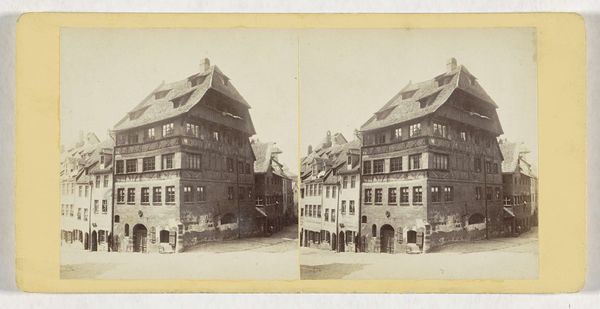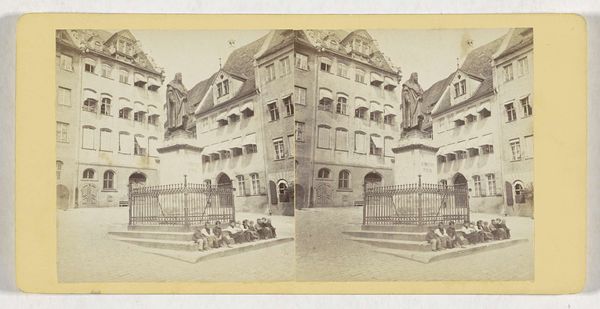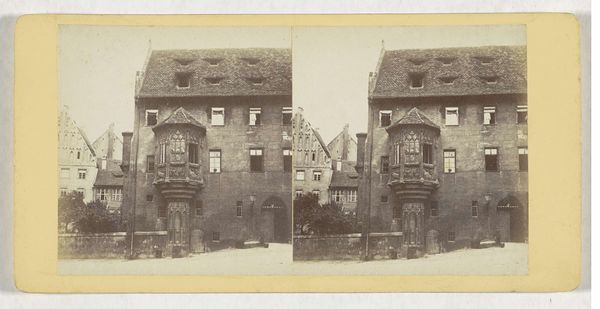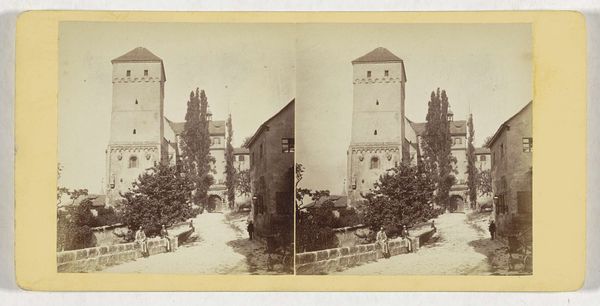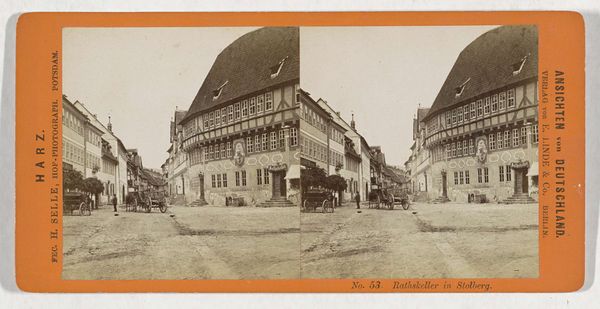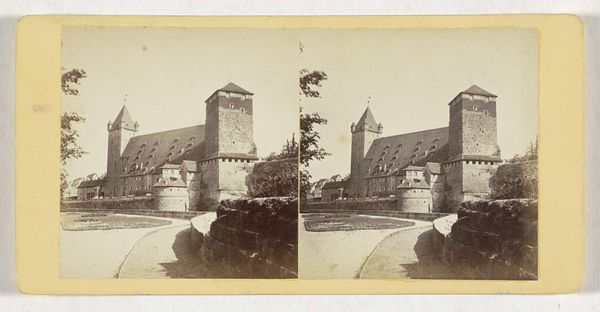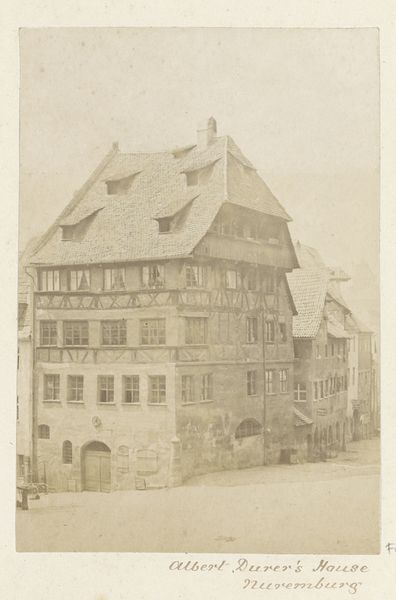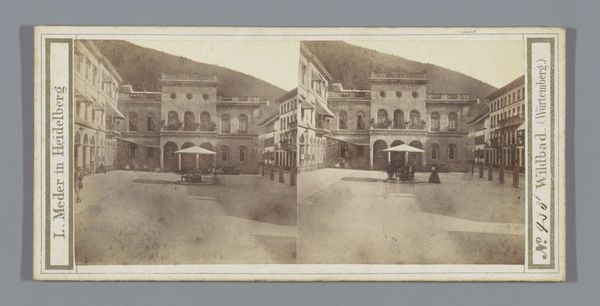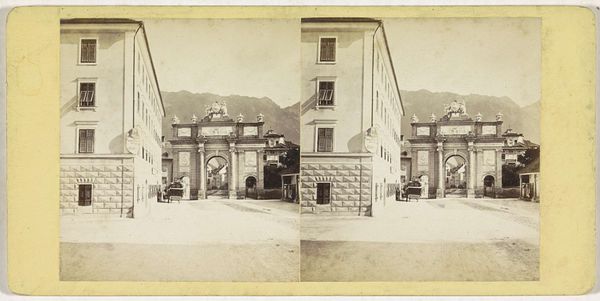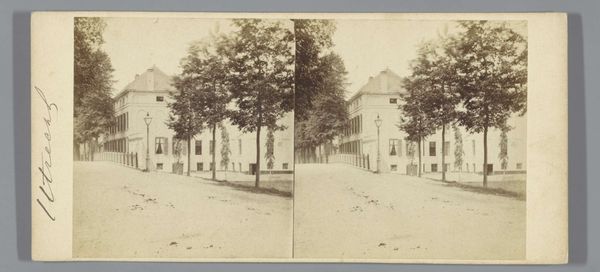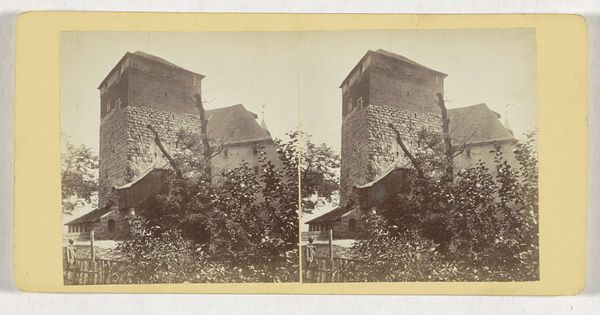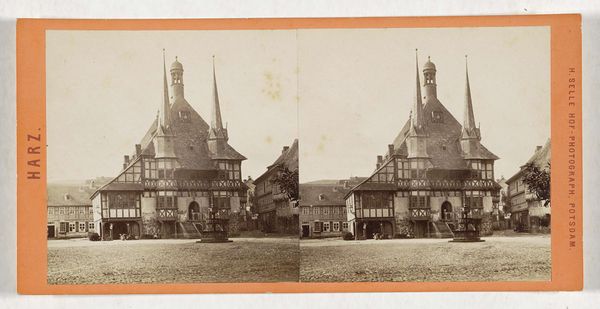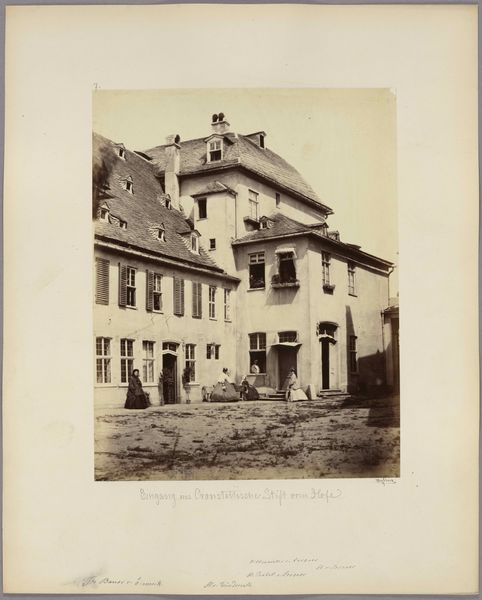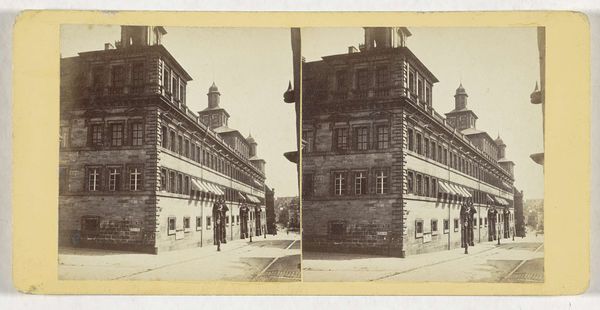
photography, albumen-print
#
photography
#
coloured pencil
#
cityscape
#
albumen-print
#
realism
Dimensions: height 87 mm, width 177 mm
Copyright: Rijks Museum: Open Domain
Curator: This stereoscopic albumen print captures the Pilatushaus in Nuremberg. It’s attributed to Johann Friedrich Stiehm and likely dates from the late 1860s to 1880s. Editor: It’s incredibly symmetrical, almost rigidly so. The strong lines of the buildings contrast starkly with what appears to be the somewhat desolate, unpopulated street. The sepia tones add to this sense of distance. Curator: I’d argue that this choice to render an urban space desolate emphasizes the stark reality of 19th-century city life and the ways that urban spaces are shaped by gendered and classed inequalities. A stereoscopic view offered audiences an accessible sense of three-dimensionality—democratizing images. Editor: Democratizing through mimicry of reality—absolutely! Observe the strong vertical elements—the corners of the buildings, that imposing pillar… they provide stability but perhaps at the expense of visual interest? And that man on the street; his pose invites us to compare our scale and perspective to the urban landscape that envelops him. Curator: This is very much in line with the growth of bourgeois photography, meant to reinforce a sort of documentary view of place—although it is not a completely unfiltered view. The composition seems arranged to signify this era's changing perception of domesticity and public life. One could posit how photographic views, distributed on trade cards, contributed to social reordering of German society at the time, solidifying certain ideals of nationalism and citizenship. Editor: Those strong horizontals! They draw our eyes along the facades, making a careful and comprehensive survey of their architecture, their forms and textures. It presents itself like a sort of visual inventory of shape. The artist is clearly preoccupied with conveying precision and order in a newly evolving world. Curator: It prompts consideration on how such carefully crafted images helped standardize visual representations and perceptions of architecture within German identity formation in this pivotal historical period. Editor: For me, Stiehm presents a masterclass in linear perspective. It prompts deeper consideration into geometry within the frame, with these facades leading toward a single point in an idealized space. Thank you for providing historical context, without which I would have certainly overlooked the greater nuances beyond the image itself!
Comments
No comments
Be the first to comment and join the conversation on the ultimate creative platform.
